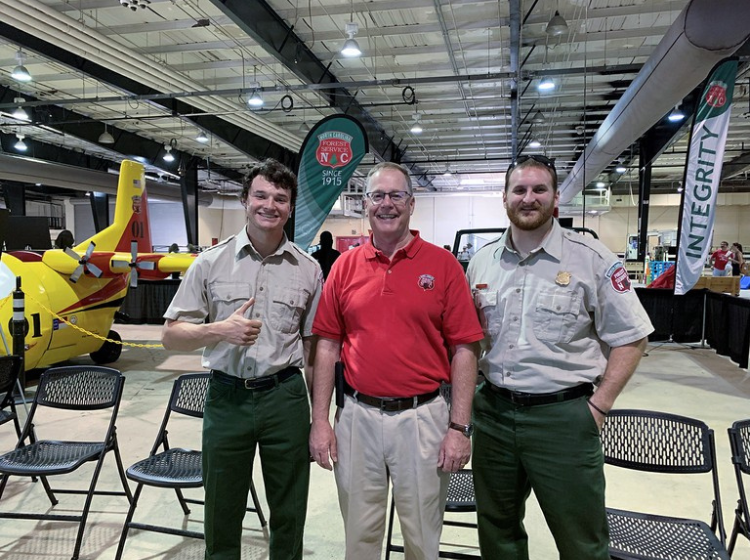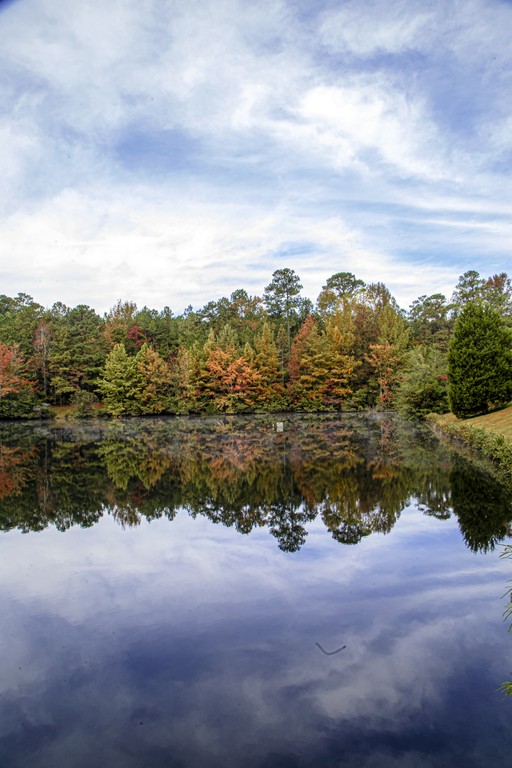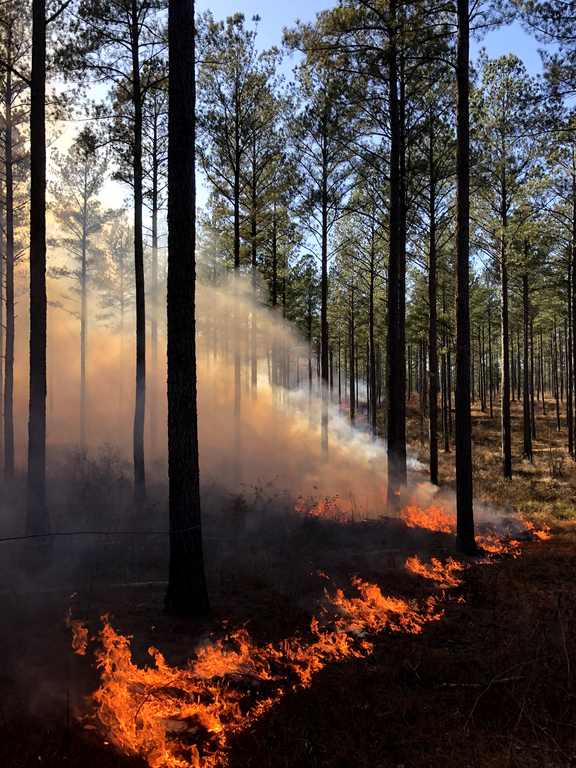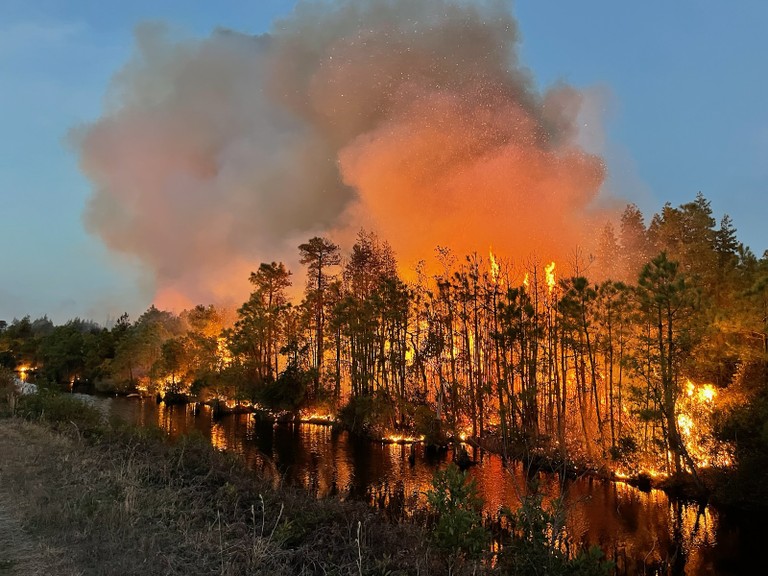Updates & Blog
Meet Scott Bissette, Assistant Commissioner for the North Carolina Forest Service

Since 2012, Scott Bissette has served as the Assistant Commissioner for the North Carolina Forest Service (NCFS), a division of the North Carolina Department of Agriculture & Consumer Services (NCDA&CS). Scott has worked for the NCDA&CS for more than 26 years, holding several different positions in various divisions. For six years, he served as the committee chair for the National Association of State Foresters’ Forest Markets Committee. He has also served as treasurer and chairperson for the Southern Group of State Foresters. Scott is a former board member of the Nash County Farm Bureau and the Nash County Farm Bureau Young Farmers and Ranchers.
The NCFS has more than 650 full time employees with an annual operating budget of approximately $65 million. He is responsible for total programmatic delivery of agency operations which consist of six main areas: forest management and development, forest protection, aviation, administrative services, safety planning and analysis, and field operations.
Scott received his B.A. in economics from the University of North Carolina at Chapel Hill. He lives on the family farm with his wife Amy and lab Peanut. He was a volunteer firefighter with the Stanhope Community Volunteer Fire Department for 25 years.
What is your agency’s mission statement?
To protect, manage and promote forest resources for the citizens of North Carolina
How did you get into forestry?
I am not a registered forester but have grown up on a farm and still live there. I have been engaged in farming and forestry my entire life. I am actively involved in managing our forestland on our family farm. I love the outdoors.
In your opinion, what is the biggest issue impacting forest landowners in your state and across the southern region?
I think the biggest issue impacting forest landowners in North Carolina is forest fragmentation. North Carolina is facing substantial development pressure and forestland is increasingly being sold and developed. This is also a trend across the southeastern United States as well.
What is your favorite thing about the forests in your state?
My favorite thing about North Carolina forests is the species diversity, from the hardwoods in the Mountains through the Piedmont, and the pine forests in the Coastal Plain.

How is forestry important to the economy of your state?
Forest products manufacturing ranks second in North Carolina from an employment standpoint when you combine furniture, wood products and paper sectors. Forestry in the state has a $32.8 billion annual economic contribution to the state’s economy and supports more than 138,100 jobs.
What is your favorite thing to do while in the forest?
I enjoy hunting and fishing.
What are the top five goals for your agency over the next 5-10 years?
- Retain and recruit staff, increased pay for employees
- Continue to be a leader in forestry in North Carolina
- Continue to provide exceptional service to forest landowners of our state
- Update and improve our seedling nurseries
- Continue with our forest health initiatives to keep invasive species and insects at bay
Why are the adoption of forestry Best Management Practices important to your state?
Clean water is important to everyone.
How is your agency working with communities and municipalities to encourage forestland retention?
Our Urban and Community Forestry (U&CF) program staff are engaged with communities, municipalities and nongovernmental entities to have these conversations and provide information where needed.
How is prescribed fire important to the landscape of your state?
Prescribed fire is critical for the restoration of fire adapted species and ecosystems such as longleaf pine, shortleaf pine, Table Mountain/pitch pine, oak-pine woodlands and upland oak. The forest health, wildlife habitat and fuel reduction benefits associated with prescribed burning are equally as important.

What is your favorite tree species?
Loblolly pine
How does your agency work with local and municipal partners to conserve your state’s forests?
Land conversion is a substantial threat to forests and urban tree canopy cover in North Carolina. The N.C. Forest Service Urban and Community Forestry Program works with local and municipal partners to fund and complete urban and community forestry practices and activities that measure changes in our urban forest resources as well as helping to identify needed policies and legislation to minimize the impacts of natural and human-made events on urban tree canopy cover.
How do partnerships play a role in wildfire response in your state?
Partners play a critical role in wildfire response. No one agency has all the equipment, staff and resources to respond to large wildfires. Cooperating agencies fill that void. Our state is mostly private property, but we have four large national forests. We interact with staff there frequently

What is your favorite native North Carolina animal?
Whitetail deer
What are some of the biggest forest health challenges in your state and how is your agency working to address them?
During the last 11 years, at least five nonnative invasive species, including laurel wilt, thousand cankers disease and emerald ash borer, were detected for the first time in North Carolina. Pests such as hemlock woolly adelgid and spongy moth have impacted North Carolina forests for more than 20 years. Asian longhorned beetle has been discovered in a neighboring state. In 2022, spotted lanternfly and elm zigzag sawfly were discovered for the first time in our state. Research and monitoring never stop in North Carolina. Our efforts to help forest landowners diagnose, treat and control the spread of destructive insects and diseases are always ongoing.
What is your agency doing to support the use of trees and forest products as a carbon solution?
A priority for us in North Carolina has always been to keep working forests working. Currently, forestland in North Carolina is being managed sustainably with growth significantly exceeding harvest across many geographical regions of the state. At $32.8 billion annually, forestry is a huge economic contributor in North Carolina. Identifying, recruiting and retaining domestic and export markets for biomass, underutilized species and low-grade materials, and traditional forest products are important for maintaining our vibrant forest sector. To support more active and sustainable forest management, we’ll continue providing technical assistance, information and outreach to forest landowners, partners and forest-based industries. We’ll continue to pursue increased funding for forestry cost share programs and forest nursery and tree improvement programs.

Smokey Bear or Woodsy Owl?
Smokey Bear
What is one thing you want people to know about your agency?
We strive to provide professional forest management advice and recommendations.
What is the best thing about being the Assistant Commissioner of the N.C. Forest Service?
The best thing about being the Assistant Commissioner of the N.C. Forest Service is working daily with the best natural resource professionals in the country.